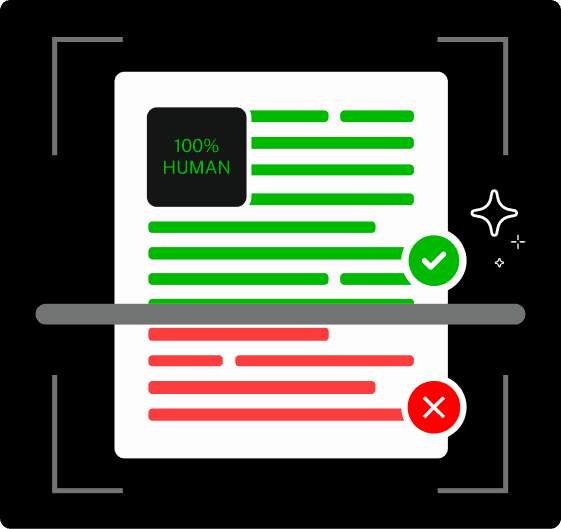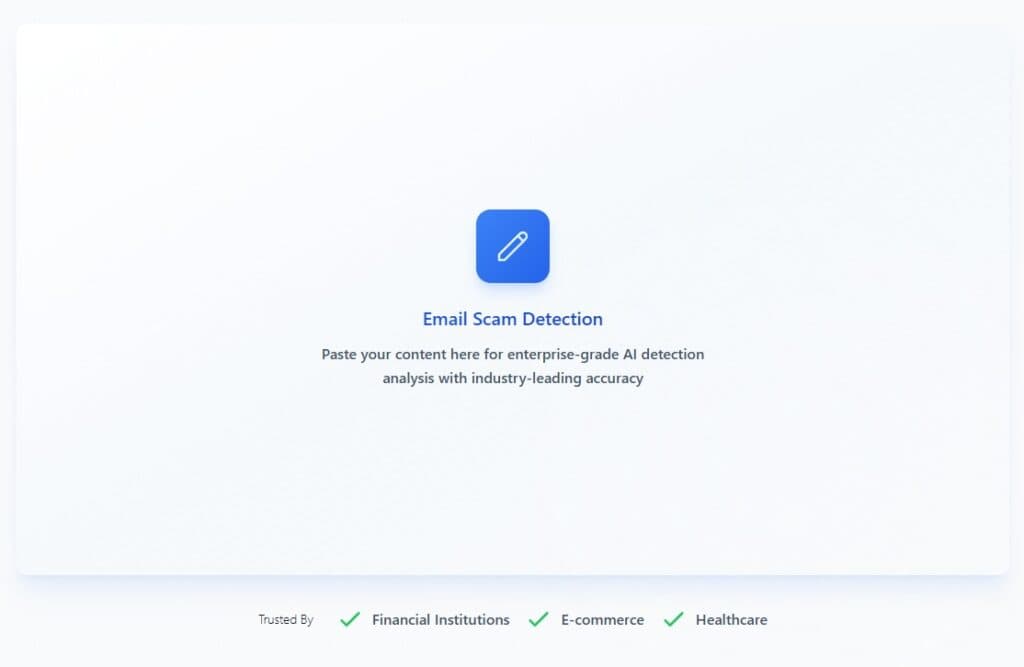Invoice fraud is costing businesses USD 3 billion annually, and that was just in 2024. And it’s getting worse. Fake invoices are everywhere now.
It has been one of the most common complaints in recent years.
This isn’t because we’re getting old, and it’s easier to trick us. It’s just that the scams are getting more and more convincing than ever.
There’s a new AI tool every day, and criminals are catching up just as fast.
With the help of technology, these fraudsters leverage technology like ChatGPT the same way we use it to create a personal gym workout plan.
Your finance team could be approving fraudulent payments without even knowing it.
The worst part? Most businesses don’t realize they’ve been scammed until the money is already gone. By then, recovering those funds is nearly impossible.
You’ll be left dealing with law enforcement, insurance claims, and a whole mess of paperwork that could have been prevented.
But here’s the good news: spotting fake invoices isn’t rocket science.
You just need to know what to look for.
This guide will walk you through reliable detection methods that show you how to spot a fake invoice, from basic manual checks to using advanced AI tools that catch what the human eye misses.
Key Takeaways
- Manual verification catches about 60% of obvious invoice fraud through basic checks like contact verification and format inconsistencies.
- Metadata analysis reveals hidden manipulation markers that fraudsters often forget to clean, including creation dates and editing software fingerprints.
- AI detection tools can identify sophisticated forgeries and AI-generated invoices with 95%+ accuracy in seconds.
- Immediate response protocols minimize financial damage when fake invoices are discovered, including payment freezes and vendor verification.
- Automated verification systems reduce invoice processing costs by up to 70% while simultaneously catching fraud that manual reviews miss.
Reliable Methods to Identify Fake Invoices
Fighting invoice fraud requires a multi-layered approach. No single method catches everything.
The scammers are getting smarter, so your defenses need to be stronger.
Let’s break down the most effective detection methods, starting with the basics and moving to more advanced techniques.


Never Worry About AI Detecting Your Texts Again. Undetectable AI Can Help You:
- Make your AI assisted writing appear human-like.
- Bypass all major AI detection tools with just one click.
- Use AI safely and confidently in school and work.
Manual Checks for Obvious Errors
- Start with the basics: Manual verification still catches plenty of fake invoices, and your accounts payable team should know what to look for.
- Begin with the invoice number: Does it follow the vendor’s usual sequence? Most companies use predictable numbering systems. A random jump or duplicate number is an immediate warning sign, so cross-reference it with past invoices.
- Check contact information carefully: Real businesses don’t suddenly change their bank accounts or emails without notice. If payment details differ, stop everything and verify directly with the vendor using the contact info you already have on file. Never rely on the number or email listed in the suspicious invoice.
- Format consistency matters: Legitimate vendors use the same template every time. Changes in logo, font, or layout are red flags. Print a few recent invoices and compare them side by side. The differences will stand out quickly.
- Typos, grammatical errors, or awkward phrasing: Professional invoices are proofread. Mistakes suggest someone created the document quickly or isn’t fluent in your company’s language.
- Always check the math: Subtotals, taxes, and totals should add up perfectly. Scammers often overlook small calculation errors. Also, compare prices to previous invoices; inflated unit costs or unexpected fees deserve investigation.
Metadata and File Examination
Every digital invoice contains hidden data that reveals how and when it was made. Fraudsters rarely remove this metadata, and it often exposes fakes.
Right-click the file and check its properties, creation date, modification date, author, and software used.
If an invoice dated March 15 was actually created on April 3, that’s suspicious.
The software line in the file properties is also revealing. If your vendor normally uses QuickBooks but the invoice came from Adobe Photoshop, stop immediately.
Multiple modification dates or missing author names are other warning signs.
File names like “final_version3.pdf” or “edited_invoice.pdf” can also indicate tampering. Mismatched color modes, such as RGB and CMYK mixing, also mean someone likely copied elements from different sources.
Using AI Detection Tools
Manual checks catch obvious fraud, but advanced scams require smarter tools. AI-powered invoice detection examines pixel-level details, font alignment, and compression artifacts.
These systems learn from millions of authentic invoices and can identify subtle inconsistencies humans miss. They analyze invoices in seconds, flag suspicious files, and free your team to focus on review.
AI even detects AI-generated invoices, which mimic real ones perfectly. Integrated tools connect with your accounting software to automate verification and reduce risk, making fraud prevention fast, accurate, and scalable.

TruthScan helps finance departments, accounting firms, and procurement teams automate invoice verification and fraud prevention.
Their AI-powered platform analyzes documents in real-time, catching sophisticated forgeries and AI-generated invoices before they result in fraudulent payments.
Stop manually reviewing every invoice and let their technology flag the suspicious ones instantly.
Learn more at TruthScan.
What to Do If You Receive a Fake Invoice
Finding a fake invoice in your system is stressful, and having a set of “next steps” is important.
You need a clear plan to contain the problem, limit losses, and prevent it from happening again.
Immediate Actions
Stop all payments immediately. If you spot a fake invoice before sending money, hold it right away.
Contact your bank if processing has already started, as you might still stop the transfer, especially for ACH payments that take a day or two to clear.
Document everything. Save the original file, take screenshots, and note when it arrived and who forwarded it.
This chain of evidence will be vital for police reports or insurance claims.
Contact the actual vendor using verified contact details from your own records, not from the invoice. Confirm whether they issued it and if the payment details are correct.
Many vendors don’t realize their name is being misused until someone alerts them.
Report the incident to your IT security team. The fake invoice might have come through a compromised account, so IT should check for breaches, malware, or phishing attempts.
Regardless of the amount involved, file a police report and alert your insurance provider immediately. Cyber liability or fraud coverage often requires quick notification.
Finally, inform your other vendors. Ask them to confirm that their contact and payment information in your system is accurate to prevent the scam from spreading further.
Long-Term Prevention
Set up a vendor verification process that fits your business.
Larger firms may need multi-level approvals for new vendors, while smaller ones can verify changes by phone.
Train your AP team regularly and share real examples of fake invoices. Implement dual authorization for large payments, maintain a locked vendor list, and require out-of-band confirmation for banking updates.
Review payment data quarterly to catch unusual patterns, and consider cyber insurance for added protection.
It’s often affordable and can save you thousands in fraud-related losses.
Why Businesses Should Use AI Detection for Invoices
Manual invoice review drains time and resources your business can’t afford. Accounts payable teams spend hours verifying documents that AI can analyze in seconds.
Meanwhile, sophisticated fraud schemes continue slipping through human review.
The human eye has limits. It gets tired, misses details, and trusts familiar layouts. AI does not.
It reviews every invoice with equal precision, catching inconsistencies that humans overlook, especially during high-volume periods.
Beyond fraud prevention, AI reduces processing time and costs. Your AP team focuses on exceptions instead of routine checks, improving efficiency and accuracy.
As invoice volume grows, AI scales effortlessly without extra hires, perfect for fast-growing or seasonal businesses.

TruthScan specializes in AI-powered invoice verification. It integrates with existing systems, automatically analyzing invoices on arrival.
Each file undergoes metadata checks, visual consistency review, and comparison against historical vendor data, producing a risk score in under 10 seconds.
Low-risk invoices proceed as normal. Medium-risk items are flagged for human review, while high-risk invoices trigger immediate alerts and payment holds.
Over time, TruthScan learns your vendors’ patterns, detecting subtle anomalies and generating monthly fraud reports for audits and insurance documentation.
It’s fast, scalable, and proven to save time, money, and peace of mind.
Also, you can use the AI Checker to verify whether an invoice’s content was written or manipulated by AI. Upload or paste the text, and it instantly analyzes language patterns and phrasing to detect AI generation.
This quick scan helps confirm authenticity before processing, adding another layer of protection against AI-forged documents.
Discover our AI Detector and Humanizer in the widget below!
FAQs About Fake Invoice Detection
What’s the Difference Between Forged and AI-Generated Invoices?
Forged invoices are manually edited using tools like Photoshop or Word, leaving artifacts such as inconsistent fonts or misaligned elements.
AI-generated invoices are created entirely by artificial intelligence trained on real documents, making them nearly flawless and harder to detect.
The difference lies in creation, not intent. Both are fraudulent. Traditional methods often miss AI-made forgeries, which is why AI detection tools are essential.
How Does TruthScan Detect Manipulated Documents?
TruthScan combines multiple AI models to analyze visual elements, metadata, and document patterns.
It learns what genuine vendor invoices look like, flags subtle deviations, and highlights suspicious areas for review.
Can TruthScan Integrate With ERP or Accounting Software?
Yes. TruthScan integrates directly with systems like SAP, Oracle, QuickBooks, and Xero.
It pulls invoices for analysis, pushes verification results back, and even scans email invoices automatically before they reach your AP team.
The Smart Way to Balance the Books
Fake invoice fraud isn’t going away. It’s evolving, becoming more sophisticated, and targeting businesses of all sizes.
Relying on your manual reviews to catch everything is no longer a viable strategy. The financial and reputational risks are too high.
The good news is that detection technology has evolved, too. AI-powered tools like TruthScan give businesses the capabilities to fight back effectively.
Combining traditional verification methods with modern AI detection creates a defense that catches both simple scams and sophisticated fraud schemes.
Start with the basics. Train your team, implement verification protocols, and establish clear fraud response procedures.
Then layer in technology that scales your detection capabilities without scaling your costs. The investment in automated verification pays for itself quickly through prevented losses and efficiency gains.
Your business deserves protection that works as hard as you do. Don’t wait until fraud strikes to start building defenses.
The best time to implement strong invoice verification was yesterday. The next-best time is today.
Strengthen your fraud prevention efforts with Undetectable AI for reliable, intelligent detection support.
